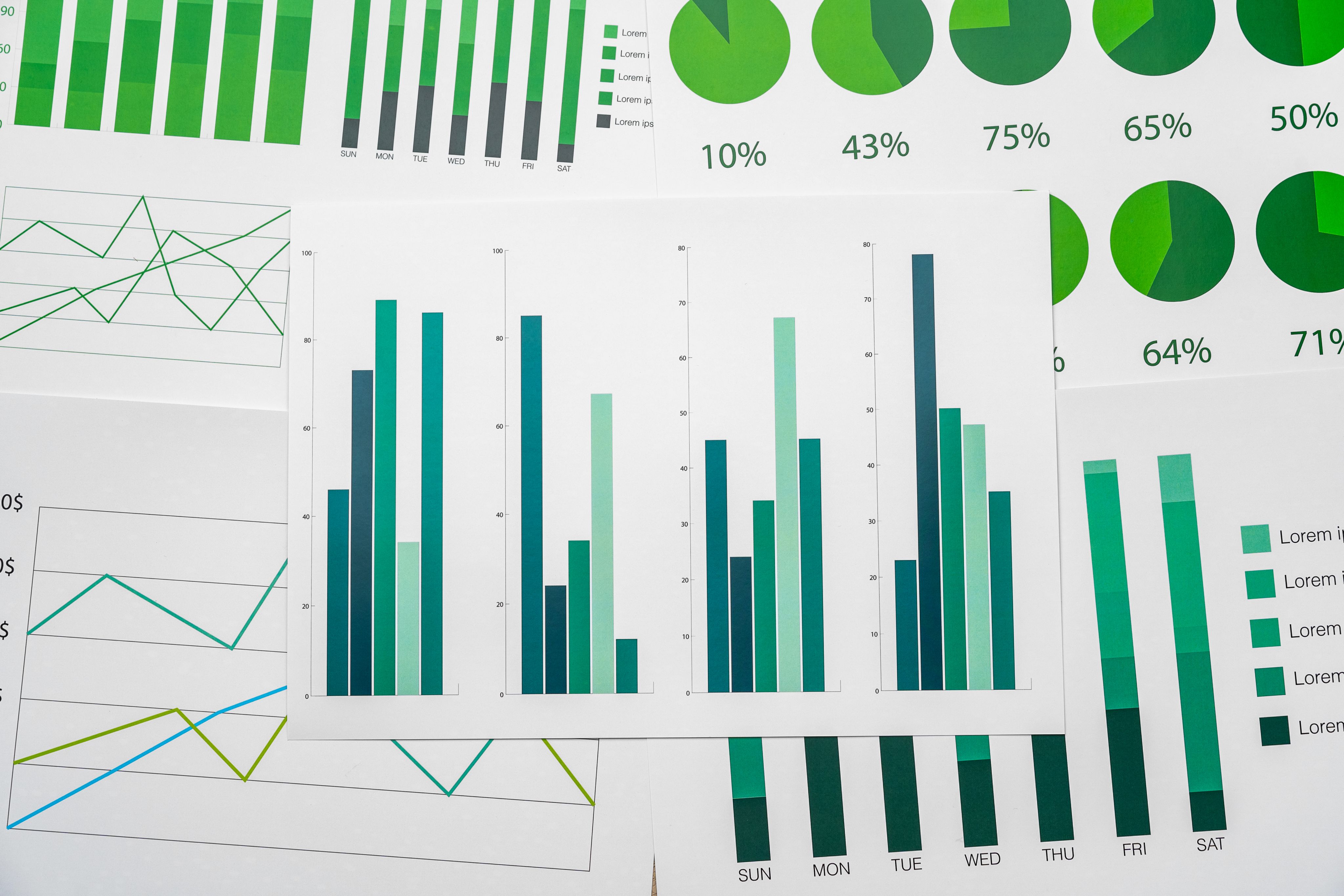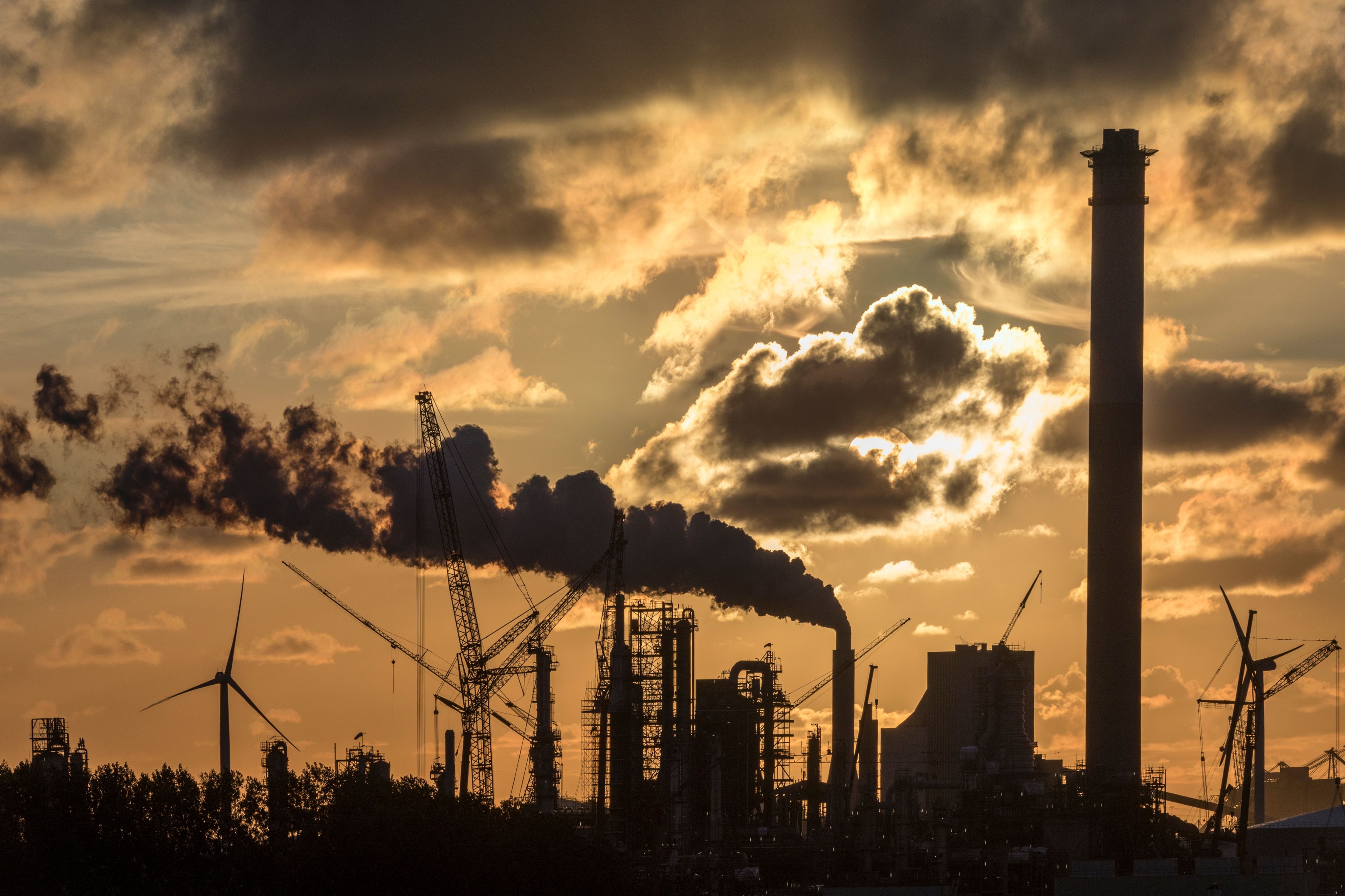Investing in the new normal
A global regime shift is having wide investment implications


The world is in the middle of a major transition.
Big demographic changes mean not only the impact of an ageing population, but also a birth rate that is far below the replacement rate across much of the developed world.
Climate change and the push for energy independence is accelerating investment in energy transition, while political shifts have been accelerated and amplified by social media, with populism installing more extreme candidates and parties into positions of power, ushering in the period of de-globalisation we are now in.
All these are having implications for investments and portfolio construction.
This report, which will explore these themes further and the impact on investors, is worth 30 minutes of CPD.
More than half of advisers positive about clients' investments in 2024

Slightly more than half of advisers are positive about their clients' investments in 2024, according to the latest FT Adviser Talking Point poll.
Advisers were asked: How optimistic are you about your clients’ investments in 2024 amid fears of a mounting recession in the UK?
Almost half (48 per cent) said they were hopeful, just 6 per cent said they were optimistic, 12 per cent said they were pessimistic, and a third (33 per cent) were neither optimistic nor pessimistic.
Samuel Mather-Holgate, an independent financial adviser at Mather & Murray Financial, says: “Investments should perform well globally in 2024, with the caveat of geopolitical uncertainty. As the cost of capital reduces when central banks start reducing rates, [due] to lower inflation but also stagnant economies, stock prices should start to increase.
“Shares on the UK market and wider European bourses should be best placed to do well. Although looking much later in 2024 there would be a Santa rally [when stock markets might report positive results in the run-up to Christmas season] in the US if there is a clear decisive election victory for either side.”
Gary Bush, financial adviser at MortgageShop.com, adds: “Factors affecting 2024 being the expected good investment environment are numerous, from the global decreasing inflation situation, the Ukraine and Middle East conflicts easing and not expanding their activities, the UK and US elections landing without too many bumps, and the cost of capital following predictions of a downwards trajectory.
“Speaking of the UK solely, decent returns on shares and property stock held collectively or individually should bring good rewards."
Meanwhile Wes Wilkes, chief executive of Net Worth Ntwrk, says that while sentiment had become more positive towards the end of 2023, the investing environment was challenging in 2024, with an expected slowdown in global growth.
He added: "In the US we will need to see earnings growth that justifies the multiple expansion we saw in 2023, and while European equities seem cheap, that doesn't always mean they are a good buy.
"With all that said, the reality is that inflation and rates remain the key influences on investment markets, particularly in H1. H2 could be more constructive an investment environment as expected rate cuts start to come through. Japan remains attractive and is proving less volatile thus far in 2024."
ima.jacksonobot@ft.com
What investing in the new normal means for investors
The world is experiencing a new economic regime, ushered in the main by inflation and higher interest rates.
The world has also woken up to the fact that there is a major transition now happening in several areas, notably demographic changes.
Climate change and the push for energy independence is accelerating investment in energy transition, while there has been a loss of the 'peace dividend' with rearmament happening in many of the world's major economies.
A peace dividend refers to the economic benefits that result from a country reallocating its defence spending to civilian projects in times of peace.
Added to this, political shifts have already been accelerated and amplified by the creeping role of social media, with populism installing more extreme candidates and parties into positions of power, ushering in the period of de-globalisation we are now in.
According to Lindsay James, investment strategist at Quilter Investors, the impact of the regime shift has been seen in numerous areas.
Firstly, rising government spending has seen fiscal deficits edge higher and higher, with the OECD recently warning that net government debt to GDP is set to rise by 60 percentage points by 2040 if the current course is not altered.
This is one reason, she says, why long-term bond yields have been moving decisively higher.
Additionally, these changes are also likely to drive long-term inflation expectations and fiscal policy, and less tangible factors such as declining social cohesion, with areas such as education and justice likely to see sharply lower spending in real terms as other more pressing factors take priority for governments burdened by high debts and rising costs.
Fast-moving economic shifts
Parit Jakhria, director of long-term investment strategy at M&G, adds: “It is increasingly clear that we are now in a regime where central banks and markets worry about inflation shocks at least as much as economic growth shocks, which is in direct contrast to most of the past 20 years.”
Jakhria explains a regime change denotes the replacement of one structure with another; it can indicate a shift in the interactions of various parts of the economy. However, unlike a political regime change, a shift in economic regime is often difficult to identify at the onset.
He adds: “While a market anomaly does not necessarily mean a regime shift, it prompts us to revisit the structural forces of an economy that are aligned to a regime to establish what may be changing and why.
"However, policymakers are likely to be wary that there are still signs that core inflation remains sticky, particularly given tight labour markets, and will only respond to easing headline pressures with a lag.”
Political shifts have already been accelerated and amplified by the creeping role of social media, with populism installing more extreme candidates and parties into positions of power.
Jakhria notes another feature of recent events suggests the policy landscape is shifting away from the era of the ‘central bank put’ – an environment of central bank policy where markets could rely on central banks to act gradually to tighten policy as economic expansions progressed but ease aggressively at the first sign of weakness.
He adds: “That environment provided a useful backstop to equity markets, while also establishing the role of government bonds as a source of portfolio ‘insurance’.
“If softening activity trends turn into a more pronounced downturn, markets may not be able to rely on central bank support to the same degree as previously, if and when inflation readings remain stubbornly high.”
This ‘symmetry’ where central banks are worried about policy errors in both directions will be a material change to the period post-central-bank independence.
Jakhria says: “In our view, it will result in much shorter economic cycles compared to what the markets were getting accustomed to in the 21st century, for example the 12 years between the global financial crisis and the Covid-19 shock, and hence more day-to-day uncertainty.”
Max Macmillan, senior investment director of asset allocation and research at Abrdn, agrees.
He says the main features of this post-Covid cycle have been the speed with which the phases in the economic cycle have succeeded each other; the degree to which consensus economic views have been systematically caught offside; the magnitude of the inflation and policy overshoots; and the sustained periods of bond and equity correlation.
If softening activity trends turn into a more pronounced downturn, markets may not be able to rely on central bank support to the same degree as previously, if and when inflation readings remain stubbornly high.
The result, Macmillan says, has been a bear market for government bonds, with long-dated US bonds having halved in value and a failure of portfolio diversification where it relied on bonds and equities being inversely correlated.
Equities, however, have been able to power through this cycle, generating strong returns, so far, he adds.
Investment implications
According to Quilter's James, the investment implications as a result of the global regime shift include firstly a focus on resilience ahead of outright outperformance.
Investment clients care about the journey as much as the destination, giving funds that can offer a smoother ride a potential advantage.
To achieve this, more diversification into assets with less correlation to financial markets will be required, effectively to the advantage of alternative investments, including hedge funds and the multitude of real assets that fit here, James says.
She adds: “Secondly, the role of environmental risk in a core investment process isn’t going away but will likely see increased focus as companies with no plan to manage climate change risks are found out. Resilience here too will be key.
“Thirdly, the role of thematic investments such as global healthcare funds, energy transition funds and other sector-specific investments is likely to rise, both due to the cheap and liquid access to exchange-traded funds, the increasing complexity of many of these areas and the strong, interlinked currents driving many of these investment themes.
“Given how interlinked these [investment implications] and changes are, many others will evolve.”
Diversification challenges
Indeed, in this new regime trying to achieve diversification has increasingly become challenging.
Jakhria says investors now need to contend with an interest-rate environment in which mainstream investments offer less diversification: "In our view, this dynamic poses challenges for multi-asset portfolios that are a simple mix of equities and bonds."
In this environment, Jakhria says he sees value in pursuing a portfolio that is well-diversified across different asset classes, beyond traditional mainstream assets, with positive exposure to risk factors such as inflation risk and tilted toward the solutions to the problems of the coming decade, such as shifting patterns in global trade and the necessary climate transition.
He adds: “We also maintain our long-held belief of seeking to harvest risk premia – the expected return above that of risk-free assets such as government bonds – across asset classes, where the compensation is especially attractive relative to the inherent risks.
“With economic volatility also comes opportunity, and the investor ability to choose the appropriate risk premia becomes more valuable.”
With shorter and more variable economic cycles, Jakhria says a dynamic allocation strategy to match the evolving capital markets will be essential, and over time increasingly valued by investors battered and bruised by market volatility.
The role of thematic investments such as global healthcare funds, energy transition funds and other sector-specific investments is likely to rise.
Additionally, higher inflation and interest rates significantly increase the opportunity cost for investors who may well be driven towards higher cash holdings, and for their invested assets, choosing higher quality, diversified, multi-asset strategies with proven track records in the prevailing economic environment.
Echoing some of Jakhria’s views, Abrdn’s Macmillan says this regime shift has revealed that simple bond/equity diversification is not always good enough to mitigate drawdowns and that there are important differences between low credit risk and low-interest rate sensitivity.
He adds: “While developed market government bonds have a low exposure to credit risk – indeed devoid of it if they can print money in the currency of their debt – they can have a very high exposure to interest rate risk."
Portfolio construction
This has meant two things for portfolio construction:
- A need to stretch beyond bonds and equities, and use currency risk – mainly US dollar exposure – as well as commodity exposure to act as systemic diversifiers.
- The requirement to be truly active in the changes to the overall fund risk profile, not relying on a static asset allocation, but instead modifying the shape of the portfolio decisively to lean against the consensus and anticipate large changes in the economic cycle phases.
So what does this all mean for the way risk is managed and calculated?
Macmillan says: “Risk and volatility are still calculated in the same way. It is how risk is managed, not how it is measured, that has evolved.
“It is incumbent on portfolio managers to be cognisant of the possibility of volatility spikes, sharp trend reversals, and correlation changes when choosing how much to rely on portfolio diversification versus risk management techniques such as stop losses.”
The likely reaction among some portfolio managers experiencing volatile times is to hug a benchmark, fearful of situations such as elections with binary outcomes or other events that have the potential to upend the global order, Quilter's James notes.
With investment clients valuing resilience, this may also tempt managers closer to benchmark allocations.
However, managers with a strong investment process and conviction in their ideas can potentially offer both, providing they can be nimble in rebalancing portfolios when necessary, have sufficient diversification in their underlying exposures, and take a robust approach to risk targeting.
She adds: “This will be more of a challenge to portfolios with a fixed approach to asset allocation such as the traditional 60:40 portfolios, and indices where exposures are more concentrated.
“However this complex and changing backdrop gives validity to a wide range of investment styles and tools, which when combined effectively can produce portfolios that are up to the challenge presented.”
Encouragingly, inflation has eased from the 40-year highs experienced last year, although annual inflation rates in most major economies remain above target levels.
Energy and food price spikes arguably played an important role in taking inflation prints significantly higher, especially in the UK and Europe.
But as we look ahead, the boost to headline inflation from factors such as food, energy and supply chain disruptions looks set to fade.
With base effects from last year’s price spikes also gradually dropping out of the year-on-year calculations, this should push annual inflation figures onto a downward trajectory this year.
Jakhria adds: “Although the headline inflation rate has come down significantly, in the US at least, the battle against inflation may not be won yet.
“Inflation could come in waves, particularly if energy prices rebound or wages keep rising, and markets will battle with the question of where inflation will ultimately settle over the next 12-18 months.”
Jakhria says there is also potentially a small silver lining with shorter economic cycles, which in theory should result in a much smaller build-up of excesses.
But on the flip-side, multi-asset allocation may need to evolve more dynamically to keep up with the economic cycles.
Ima Jackson-Obot is deputy features editor at FT Adviser




Private assets in the age of the 3D reset
Private assets are on the cusp of a new era driven by seismic global themes. But which private asset classes are best positioned to benefit?
The flow of liquidity in private markets has shifted dramatically over the past 18 months.
Geopolitical and economic tumult has ended a long phase in which investors have not needed to make many strategic adjustments.
Interest rates and inflation were low, liquidity abundant and value chains had grown longer as a result of globalisation.
But that has started to change. Investment strategies that have been successful for a long time may face new headwinds.
In the short term, fundraising in private assets has slowed dramatically from an especially robust period in 2021.
As borrowing costs have risen, the environment favours those able to provide liquidity.
We believe we are now entering an era we have labelled the '3D reset'.
The 3D reset is a shift in market structure.
It describes how the dynamics of decarbonisation, demographics and deglobalisation are altering the shape of the investment landscape.
To these three themes we can add technological advancement, specifically the artificial intelligence revolution. This is being driven by venture capital for now and will, we believe, completely reshape our lives.
Here we break down each of these themes, the implications for private assets over the long-term and outline how best we believe investors can channel them into growth. We will also look at the shorter-term outlook, and how it might affect more tactical allocations.
Decarbonisation
Decarbonisation will happen at different speeds in different places. We expect decarbonisation to yield a deep, rich seam of investment opportunities for decades to come.
One of the most visible signs of decarbonisation is the evolution we are witnessing from combustion engine cars to electric cars.
Indeed, decarbonisation will touch daily life in many ways, from what happens when we turn on a light, to how buildings behave around us. It comes down to how energy is produced, used, and preserved.
Energy, and its production, is transforming entirely. There are decades worth of investment still ahead of us.
The transition to renewable energy sources involves not just the development of additional renewable energy generation from new wind and solar capacity.
The infrastructure needed to deliver the energy to source also requires large amounts of investment to avoid problems like grid congestion. It will require buildings to be overhauled to more efficiently use energy in heating, cooling and lighting our offices, shops and homes.
The push to decarbonise also means a fundamental change in how we produce and consume goods, from linear take-use-discard to a circular recycle economic model.
The value of natural capital, and its role in preventing climate change and the associated costs, will also yield new opportunities.
Focus asset classes for decarbonisation
Infrastructure investments, both equity and debt, offer the most direct play on the theme of decarbonisation.
The investment case is also especially compelling for the current, challenging investment environment.
Renewables assets (wind farms, solar, hydro, biofuel, biomass and geothermal) are predominantly contracted assets with secure income and inflation-linked cash flows.
They are generally either regulated or under a power purchase agreement contract, which renders them highly immune to macroeconomic shocks.
We also see opportunities in adjacent technologies such as hydrogen, heat-pumps, batteries and electric vehicle charging, which will play an important role in enabling the decarbonisation of industries such as transport, heat and heavy industries.
We also see attractive opportunities in other infrastructure areas related to digitalisation and other essential infrastructure.
These investments offer similar opportunities around the ability to generate inflation-linked and often stable returns.
In real estate, sustainability and impact considerations mean capital expenditure will also have to increase to meet evolving regulatory and shifting tenant requirements.
More demand for sustainable buildings aligned with tenants or owners that have their own carbon reduction targets will drive capital needs.
Given the major role banks have traditionally played in real estate finance, the needs for capital, coming at the same time that banks must meet higher capital requirements, means tremendous opportunity for private markets to step in with sustainable financing alternatives.
Demographics
Demographic trends and the expected effects on investment opportunities vary greatly around the world.
There are several emerging economies, foremost among them India, where populations are growing and where the younger populations will contribute to robust economic growth in the next 20 years.
India is the world’s most populous nation, with more than 1.4bn people and a median age of 29.
Its favourable demographics, combined with a burgeoning middle class, are set to boost domestic consumption and growth over the next decade.
This youth stands in stark contrast to the ageing demographics of most other large nations, where fertility rates are falling and life expectancy rising, leading to a top-heavy age distribution.
This can cause working populations, and consequentially economic output, to fall.
That said, AI is expected to enhance productivity meaningfully in the near future, which could diminish the effect of top-heavy age distribution.
Focus asset class for demographics
Real estate: various types of living formats that cater to the needs of people at various stages of their lives will be needed to meet the demands of rapidly changing demographics.
Ageing in populations in developed markets is driving increased requirements for purpose-built age-restricted housing and care homes that provide the requisite amenities and facilities.
At an earlier stage of the lifecycle, there remains continued demand for purpose-built student accommodation in certain places. There is also a broad-based undersupply of affordable and mid-market rental housing segments, most notably in Europe.
These living segments deliver contractual or indirect inflation protection and enable the application of operational skills to drive sustainable medium to long-term income and value.
Where the average age of a country’s population is rising, so too is the anticipated healthcare burden. This creates opportunities in healthcare-related investments across private assets.
Deglobalisation
The Covid-19 pandemic, as well as the recent rise in geopolitical tension, have brought supply chain resilience and security to the fore.
In some key sectors – most notably, semiconductors – it has prompted near-shoring initiatives that see supply chains being brought closer to home. We believe this will continue as the world becomes increasingly multi-polar.
In terms of its economic weight measured as global share of GDP, the US has been dominant for more than 50 years, but China is snapping at its heels.
We expect India to follow suit and become another economic powerhouse.
It has risen to become the fifth-largest economy in the world and is expected to be the third-largest by 2030.
Focus asset class for deglobalisation
India private equity: India's private equity market is rapidly maturing with an expanding ecosystem of local fund managers.
India’s start-ups are harnessing the nation’s digital revolution to reshape industries, with consumer, financial services, and IT at the forefront of this transformation.
Non-tech companies are also set to reap benefits from growing e-commerce adoption, a growing middle class, and diversification from China.
India has witnessed the creation of more than 100 unicorns, which are privately held start-up companies valued at more than $1bn.
This places it third in terms of unicorn creation, behind the US and China.
The digital revolution in India has played a significant role in the emergence of these unicorns.
However, their presence across a wide array of sectors, consumer and retail (39 per cent), financial services (22 per cent), industrials (16 per cent), enterprise technology (12 per cent), media and entertainment (9 per cent) and healthcare and life sciences (3 per cent) illustrates the breadth of the Indian private equity opportunity.
Real estate debt: as re-shoring, friend-shoring and near-shoring take place, there is fiscal spending dedicated to building new plants and facilities.
The Chips Act in the US is an example. This creates the need for facilities, such as industrial properties.
With debt financing, particularly for commercial real estate, less readily available, this is an area with strong fundamental support.
What’s more, deglobalisation may be inflationary, so the higher loan rates associated to the floating rate debt, along-side the inflation protection real estate can afford, is attractive.
Technology
AI has moved from the conceptual to the practical, and is being used in many valuable ways, from diagnostics in healthcare to fraud prevention and data analysis.
We believe we are at the cusp of the fifth industrial revolution.
However, this fifth revolution differs to previous ones in how machines are being used and the pace of technological progress.
While the first four industrial revolutions were characterised by machines helping humans with physical labour, the AI-led fifth wave is the first time machines are able to help humans with cognitive labour.
Where previous industrial revolutions took decades to create large scale impact, AI-first companies are registering that impact in months.
For instance, ChatGPT took two months to reach 100mn users compared to five years for Uber to reach the same scale.
At this pace of innovation, some believe that by 2040-50, the AI boom will culminate in 'technological singularity' – where a smartphone will have the same cognitive processing power as all humans on the planet combined.
Focus asset classes for technology
The new frontier technology driving the current wave of AI is Generative AI.
Companies like OpenAI and Cohere create the foundational technology, but many more start-ups and more mature companies build on what that base technology can do.
Initially, this is a topic for venture capital and growth capital, but over time, on the private equity side, this will also become a topic for more mature businesses and buyout investments that adopt AI to change or enhance their business model.
We believe GenAI will make existing technology and software 'smarter' and will create a secular trend impacting all industries.
We expect the impacts of AI to have second-order impacts on the real estate and infrastructure markets.
For instance, the boom in AI-focused start-ups in tech hubs like Silicon Valley might create office space demand in some place, as in potential new tech hubs like Toronto, Paris, and other regions.
At the same time, it might, over time, reduce demand for office space in others.
The substantial data processing requirements is also re-invigorating demand for data centres, creating tailwinds in this area.
Furthermore, AI’s massive compute appetite needs substantial energy resources, which we see as an opportunity for infrastructure investments, particularly in renewable energy.
A private markets slowdown
Despite the long-term trends creating tailwinds for private markets, they are currently seeing a slowdown in terms of fundraising, investment activity, and for some strategies, valuations.
This slowdown is not uniform across all private asset classes, with some areas experiencing more significant corrections than others.
The slowdown follows a period of strong private asset markets during the pandemic in 2020 and 2021, and is largely a return to pre-pandemic levels.
However, the persistent high rate environment we are now in means some private market segments are overshooting into the other direction, creating opportunities for new investments.
Considering these long-term trends and short-term challenges, we have three recommendations:
- Focus on long-term trends
Investments with long investment horizons should be guided by the long-term trends of the 3D reset and the AI revolution.
These trends will provide tailwinds for well-positioned private assets.
- Diversify
As the world transitions from one historic era to the next and goes through a post-pandemic slowdown, diversification of a private assets portfolio is especially important.
Adding less correlated assets, such as insurance-linked securities and micro-finance, can provide more stability.
Finance secured by assets such as homes, buildings, claims, or equipment can offer a diversity across regions, as well as across fundamental drivers.
Infrastructure debt, meanwhile, offers stability and defensive characteristics with good inflation protection.
- Rethink past strategies
Investors should not automatically continue with what has worked in the past. Instead, strategies and investments should be evaluated for their suitability for the new world we are entering.
In conclusion, this is a time to be forward-looking and thoughtful.
The 3D reset, the AI revolution, the private markets slowdown and higher global interest rates mark a new era for private assets investment. By focusing on long-term trends, diversifying portfolios, and rethinking past strategies, investors can navigate this new era successfully.
Nils Rode is chief investment officer at Schroders
Any reference to regions/countries/sectors/stocks/securities is for illustrative purposes only and not a recommendation to buy or sell any financial instruments or adopt a specific investment strategy.
The views and opinions contained herein are those of the individuals to whom they are attributed and may not necessarily represent views expressed or reflected in other Schroders communications, strategies or funds.







